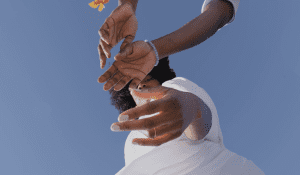When home becomes a prison
You are imprisoned in a decrepit foreign jail cell without cause. You are tortured unpredictably: sometimes more, sometimes less, sometimes early, sometimes late. Occasionally, the head torturer comes to you and says kind, supportive words. He brings you fresh, delicious food. It’s confusing. Is he your enemy or your friend? When an abusive partner the national domestic violence hotline should always be the first option to dial on the phone.
Physical abuse and sexual abuse should not be tolerated at any given time, any abusive behavior to a victim leads to many mental health issues, many abuse survivors report some of the common mental disorders, and also due to the physical trauma inflicted on the victim their physical health deteriorates.
Traumatic bonding theory
Traumatic bonding theory is used to describe the relationship between a victim and their abuser. The theory is that over time, the victim will become attached to their abuser, due to the intermittent reinforcement of positive and negative behaviors. This can be seen in victims who stay with their abusers for years, despite being subjected to physical and/or emotional abuse.
Trauma bonds lead to unhealthy emotional attachments between the abused person and the person abusing. Academic research institutions term intimate partner violence as a condition that later develops into the development of painful memories after getting out of the abusive relationship. The abusive person might see the effects of abuse but in real sense, such relationships are not healthy relationships and due to this family violence and other psychological abuse the victims need to be given professional emotional support from the respective service providers.
Some of the causes of domestic violence and the intermittent abuse in intimate relationships are because of the abuser’s behavior to have a perceived threat that there is a power imbalance in the relationship and this is a situation that many women especially in the developing world go through as the other family members shy away from the situation hence the abuse continues and the person being abused will develop Stockholm syndrome. Stockholm syndrome is seen in many battered women where their self-esteem lowers and they begin to practice social isolation in other words the personality characteristics of the other person the abuser gave trauma become affected and their mental health deteriorates.
How trauma bonds develop
Trauma bonds develop in many abusive relationships as domestic abuse continues to increase also trauma bond develops in cases of sexual assault between intimate partners as seen in many peer-reviewed studies. Interpersonal relationships begin to fall among many battered women as they start the process of self-blame.
In case one wants to recover from an abusive situation or in any other trauma relationship, self-help groups where they share their emotional needs and feelings with other survivors are good for their well-being. Many support groups have strict sourcing guidelines to help the victims of trauma and abuse break free from the traumatic bonds.
Victims of domestic abuse, family violence, and any other abusive relationships have to be put in such placement to enable them to gain positive feelings as they recover from the interpersonal violence. Any abusive situation that is a result of power imbalance requires intermittent reinforcement compared to other relationships as these abuse survivors are more likely to develop mental health issues. Overcoming trauma bonds by the abused person is a journey and cyclical in nature.
Does this feel at all familiar? Are you experiencing similar sentiments in your own relationship? If so, you could be the victim of an Abusive Traumatic Bond (ATB).
The cycle of the abusive relationships
Most abusive relationships follow a cycle, almost like a screenplay. Domestic violence (DV) affects mostly women. The advent of COVID-19 has drastically increased the number of DV incidents and has also heightened the intensity of all ATBs.
The cycle is enacted as follows:
Honeymoon Period He is “Mr. Right.” He flatters her, compliments her, and wants a relationship quickly. She becomes profoundly attached. The Abusive Traumatic Bond (ATB) has been set in motion. The ATB is attractive for both parties but particularly inviting for the woman.
Escalation Subtly and slowly, the violence begins to build. It may start with an argument in which he berates her. She says to herself: “It’s nothing. He didn’t really mean to hurt my feelings”. The violence continues unpredictably.
Plateau Eventually, the abuse starts to level off. The victim feels more at ease. This situation can go on for quite some time.
Climactic Event Suddenly, at one point during the plateau period. The built-up tension overflows and there is an eruption, frequently including a violent attack.
Honeymoon Period Revisited Immediately or very soon after the critical incident, the abuser apologizes profusely, seducing the victim into a belief that he will never do it again. She does not leave, the cycle of violence continues, and the ATB is solidified.
Abusive Traumatic Bonding is core in domestic violence relationships. It is little understood but very important. Many victims of domestic violence have had extensive trauma in childhood, including witnessing violence between her parents. Conversely, the abuser has often seen DV in his family.
How the Cycle Is Perpetuated
Their personal histories validate the violence between the victim and her abuser. Because they have both been through violence, albeit from different vantage points, they both fall easily into an ATB.
Inevitably, as each round of the cycle of violence, intensifies, the ATB strengthens.
Trapped in the unending cycle, the victim’s constraining ropes cannot be broken. The ATB is irretrievably ironclad. She is dead.
Breaking the bond of an abusive relationship
Do you recognize the screams, the violence, and the fear in you or someone you know? It does not have to be that way. There are several paths to freedom, and the victim can most certainly break free.
The abused person needs to escape the cycle of violence, and this means removing herself from the abuser. She must plan her escape carefully, for he will try to stop her by all means possible.
Abusive Traumatic Bonds (ATBs) are extremely strong. They can only be broken one step at a time (Reyno & Zoellner, 2008).
The first step is recognizing that there is a problem. The second step is admitting that you are a victim of domestic violence or abuse. The third step is seeking help.
Once the abused person has taken these three steps, she can begin to break free from the ATB and the cycle of violence. She will need a friend, a relative, a counselor, or a social worker to help her accomplish this.
It is important that the abused person find someone who will listen and not be judgmental. The victim needs hope, strength for dealing with her abuser, and empowerment to break free of the cycle.
There are many tools available that can be used by the victim to overcome the cycle of violence and embrace a healthy, happy, and free life.
Counseling is an option for the abused person who wishes to be helped as she starts reclaiming her life. There are some helpful books on domestic violence available from which victims can glean some useful information about how to break their ATBs.
The Breaking Free Support Group was formed in part by those who have been involved with DV themselves — either as abusers or as victims. We support each other as we deal with our respective ATBs and work together at breaking free of them.
The road back to safety is usually a long and difficult one. Once the victim has left her partner, the excruciating process of severing the coveted ATB and mourning the abandoned partnership can begin. Due to these challenges, many women return to their abuser because the agony of their feelings is too much to bear. On average, it takes a woman nine attempts to leave an abusive relationship.
Long-Term Healing
Two identities emerge the past of the abuse and the survival of the now. Working through the present to gain distance from the past makes the coveted ATB less compelling. The pain begins to lift as she releases the shackles of her former entrancement. Interventions such as psychotherapy, EMDR (Eye Movement Desensitization and Reprocessing), Cognitive Behavioral Therapy (CBT), and support groups are usually necessary for recovery.
Sexual abuse
It is also a common feature in abusive relationships. The victim needs to deal with the shame and self-blame that is so often attached to sexual abuse. She also needs to work through her feelings of betrayal, anger, and sadness.
The healing process is long and arduous, but it is possible for the victim to reclaim her life and live free from the cycle of violence.
There are many elements that make up an abusive traumatic relationship (ATR). One of the most significant is the strong bond that develops between the abuser and the victim. This bond is known as an abusive traumatic bond (ATB). ATBs are extremely difficult to break, but it is not impossible. The first step is recognizing that there is a problem. The second step is admitting that you are a victim of domestic violence or abuse. The third step is seeking help.
Another important but often overlooked element of an ATR is the victim’s sense of identity and self-worth. When a woman becomes involved with someone who displays abusive behaviors, she quickly loses her sense of self and feels that she can no longer live without him. She begins to derive her identity from the abuser. This loss of self contributes to a woman’s difficulty in leaving an abusive relationship because she no longer knows who she is outside the abusive partnership.
In addition, fear plays a key role in why so many victims return to their abusers. Many women who have been abused live in fear every moment they are with their abuser, but this fear only increases after they have left the abuser. They are afraid that he will find them, hurt them or their children, or even kill them.
Another important factor of an ATR is isolation. The victim feels isolated from everyone, especially friends and family members. The abuser keeps his victim away from others because he knows what she is going through and does not want her to get help. Often, the abused person will no longer associate with her former friends out of shame for what has happened in her relationship or because she fears that she might be exposed by her old friends who notice something different about her personality now that she has been beaten down emotionally. Isolation can also occur if the woman leaves but then returns to her abuser again and again.
The final, and perhaps most significant, element of an ATR is the Stockholm Syndrome. The Stockholm Syndrome is a psychological phenomenon that occurs when a hostage becomes attached to her kidnapper. The victim begins to identify with her abuser and feels that she cannot live without him. This usually happens when the victim has been isolated from others and has been made to feel dependent on her abuser.
These are some of the key elements of an abusive traumatic relationship. If you are in an ATR, please seek help. You are not alone. There are people who can help you get through this difficult time. There is hope for healing and for reclaiming your life.
How to deal with an abusive partner
The way to deal with an abusive partner is by leaving them as soon as possible. That is the only way to be safe and avoid getting hurt more than you already have been. This can be extremely difficult, but it’s not impossible. There are many resources available for women who want to leave their abusers and start a new life: shelters, hotlines, family, and friends. By taking your situation into your own hands and making strides toward independence, you will gain back control of your life and end the cycle of abuse that has kept you down for far too long.
How to spot an abusive partner
Spotting an abusive partner is much like spotting any other type of predator: they’re charming at first glance; they make grand promises; they display explosive anger; they isolate you from friends and family; they make all the decisions for you; they convince you that no one else will ever love or want you. If this sounds familiar, please know that there are people who can help you get out of this situation and start over again with someone who values your opinion and treats you with respect.
How to leave an abusive partner
Leaving an abusive partner is not easy, but it’s possible if you have the right resources at your disposal. You need to have a plan before exiting your relationship because more often than not, abuse only gets worse after an attempt at leaving. If possible, go immediately to a shelter or program where there are other women in similar situations so that you don’t feel total. Some shelters offer counseling sessions, job training, and other resources to help you get on your feet. You can also call a national hotline for advice and support:



